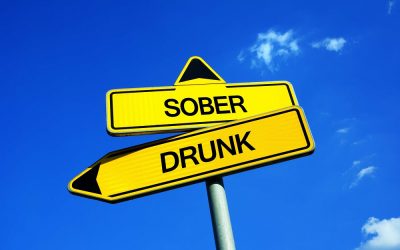Contents
From people in active recovery to advocates who have lost loved ones to the devastating disease of addiction, our community understands the struggle and provides guidance born of personal experience. DrugRehab.com provides information regarding illicit and prescription drug addiction, the various populations at risk for the disease, current statistics and trends, and psychological disorders that often accompany addiction. You will also find information on spotting the signs and symptoms of substance use and hotlines for immediate assistance. We provide integrated treatment for mental health disorders and addiction. Behavioral treatments, also known as alcohol counseling or “talk therapy,” provided by licensed therapists are aimed at changing drinking behavior. Examples of behavioral treatments are brief interventions and reinforcement approaches, treatments that build motivation and teach skills for coping and preventing relapse, and mindfulness-based therapies.
The term “problem drinker” is used to refer to persons not necessarily physically addicted to alcohol but experiencing health, social or other problems. DrugRehab.com aims to improve the quality of life for people struggling with a substance use or mental health disorder with fact-based content about the nature of behavioral health conditions, treatment options and their related outcomes. We publish material that is researched, cited, edited and reviewed by licensed medical professionals. The information we provide is not intended to be a substitute for professional medical advice, diagnosis or treatment.
Nevertheless, alcohol use in most countries, including Canada, is relatively moderate today compared with that of the 18th and 19th centuries. It is difficult to obtain figures on early drinking in Canada. In the 1870s provinces officially recorded only about 5 litres per year, but this statistic does not include home-manufactured cider and beer, which in a largely rural, agrarian country could have accounted for a major proportion of consumption. Moreover, in other countries, such as Sweden and the US, the growth of the Temperance Movement in the 19th century coincided with a trend of falling alcohol intake.
Because the body has adapted to deal with an alcohol-rich environment, the alcoholic physically needs it to avoid the painful symptoms of withdrawal. As alcohol consumption increases, the liver adapts to break down alcohol more quickly. Over time, repeated alcohol exposure also alters a person’s brain chemistry. To counteract the sedating effects of alcohol, for example, the brain increases the activity of excitatory neurotransmitters, which speed up brain activity. Many people with AUD do recover, but setbacks are common among people in treatment.
Some of these proposed interventions have limitations or are in their infancy . However, it is hoped that some of these preliminary findings may lead to innovative treatments, which are much needed in addiction. Alcohol abuse has also been blamed for excessive costs in other areas such as law enforcement, social welfare and traffic accidents. Lost production in industry due to alcohol probably costs more than $1 billion a year. Wine is indispensable to religious ceremonies in some groups, but is considered anathema by others. Social and psychological benefits of alcohol use are obvious, as is the harm caused by excessive and intemperate use.
See your doctor if you begin to engage in behaviors that are signs of alcohol use disorder or if you think that you may have a problem with alcohol. You should also consider attending a local AA meeting or participating in a self-help program such as Women for Sobriety. Alcohol use disorder develops when you drink so much that chemical changes in the brain occur. These changes increase the pleasurable feelings you get when you drink alcohol.
Men in the intermediate levels of occupation and education have the highest levels of alcohol consumption. In general higher education and income lead to more frequent drinking, though not to consuming greater quantities at one sitting. Jews are the least likely to abstain from alcohol of any religious group, but they also have the lowest rates of alcoholism.
Individual factors include age, gender, family circumstances and socio-economic status. Although there is no single risk factor that is dominant, the more vulnerabilities a person has, the more likely the alcohol allergy with hives person is to develop alcohol-related problems as a result of alcohol consumption. Poorer individuals experience greater health and social harms from alcohol consumption than more affluent individuals.
The sooner you recognize there may be a problem and talk to your healthcare provider, the better your chances at recovery. Mild and early-intervention cases may only be problematic for a period of time, but severe cases are often a lifelong struggle. Alcohol use disorder is diagnosed based on criteria as outlined by the Diagnostic and Statistical Manual of Mental Disorders, Fifth Edition (DSM-5). A person must meet at least 2 of the 11 criteria during the same 12-month period. Verywell Health’s content is for informational and educational purposes only. In addition, they have proven to be very effective in helping people reach their goal.

In 1956 the American Medical Association declared Addiction to alcohol and other drugs, to be a disease. Definitions include disorder of human functions with signs and symptoms not caused by physical injury. The Butler Center for Research at the Hazelden Betty Ford Foundation investigates these and other questions and publishes its scientific findings in a variety of alcohol and drug addiction research papers and reports. ΔFosB is an essential transcription factor implicated in the molecular and behavioral pathways of addiction following repeated drug exposure. The formation of ΔFosB in multiple brain regions, and the molecular pathway leading to the formation of AP-1 complexes is well understood. The establishment of a functional purpose for ΔFosB has allowed further determination as to some of the key aspects of its molecular cascades, involving effectors such as GluR2 , Cdk5 and NFkB .
Seeking professional help early can prevent relapse to drinking. Behavioral therapies can help people develop skills to avoid and overcome triggers, such as stress, that might lead to drinking. Medications also can help deter drinking during times when individuals may be at greater risk of relapse (e.g., divorce, death of a family member). Drinking too much on a regular basis for an extended period or binge drinking on a regular basis can lead to alcohol-related problems or alcohol use disorder.
As explained in an article on NIH MedlinePlus, media tends to “sensationalize” addiction. This negative stigma colors addiction as a problem—one that people engage in by making a choice. While it is true that people do make the initial choice to engage in substance use, studies of people who are addicted to substances have shown that the choices they make after that are not their own. Both types of research monitored reactions to drugs, which showed that drugs actually change the composition of the brain. In turn, the brain of a person afflicted with addiction responds differently in terms of “choice” and “free will” than does the brain of a person who is not afflicted with addiction. In fact, there is still opposition to the idea that addiction is a disease.
They spend much of their time figuring out how to obtain it, drinking it, and recovering from its effects. Everyone and everything around them suffer the consequences of their actions in one form or another. A significant proportion of the disease burden attributable to alcohol consumption arises from unintentional and intentional injuries, including those due to road traffic crashes, violence, and suicide. Fatal alcohol-related injuries tend to occur in relatively younger age groups. While end-stage alcoholism is a dire situation, it’s not a hopeless one. Late-stage alcoholics can get better if they seek treatment, and some of their health problems can even be reversed if caught early enough.

At this point, drinking is no longer just a casual social activity — it’s become a daily habit that may be used to cope with stress, anxiety or other emotional problems. The mental and physical health of alcoholics are rapidly deteriorating at this stage, and unless they seek alcohol rehab, they may drink themselves to death. But some people who drink face a risk of developing this chronic and progressive disease, which affects roughly 1 in every 8 Americans and contributes to about 88,000 deaths annually. Our community offers unique perspectives on lifelong recovery and substance use prevention, empowering others through stories of strength and courage.
In its early stages, taking one or two drinks may be all it takes to get the “song” to stop. Somewhere down the road, the only time the song stops is when he passes out. Verywell Mind articles are reviewed by board-certified physicians and mental healthcare professionals. Medical Reviewers confirm the content is thorough and accurate, reflecting the latest evidence-based research. Content is reviewed before publication and upon substantial updates.
Alcoholism is the lay term for alcohol use disorder , which is a brain disorder affecting nearly 15 million people aged 12 and older in 2019, according to a national survey. This definition is inadequate, however, because alcoholics, unlike other drug addicts, do not always need ever-increasing doses of alcohol. Opium addicts, on the other hand, become so adapted to the drug that they can survive more than a hundred times the normal lethal dose, but the increased amounts to which alcoholics become adapted are rarely above the normal single lethal dose. The disease theory of alcoholism never explains how or why people are alcoholic.
Alcohol, in fact, is the cause of more than 50 percent of liver-disease related deaths in this country, and alcohol-related liver disease costs more than $3 billion annually. These physiological changes contribute to the increasing tolerance seen in early-stage alcoholics. Despite heavy alcohol consumption, they may show few signs of intoxication or ill addiction and withdrawal effects from drinking, such as a hangover. And as tolerance builds, they’ll begin to drink more and more to achieve the same buzz or high they’re used to. By the time they’ve reached the third and final stage of alcoholism, drinking has consumed their lives. Their alcohol withdrawal symptoms are so severe that they must drink continually to avoid them.
In this section, you will find information and resources related to evidence-based treatment models, counseling and therapy and payment and insurance options. Healthcare professionals use criteria from the Diagnostic and Statistical Manual of Mental Disorders, can i drink alcohol during pregnancy Fifth Edition (DSM-5), to assess whether a person has AUD and to determine the severity if the disorder is present. Severity is based on the number of criteria a person meets based on their symptoms—mild (2–3 criteria), moderate (4–5 criteria), or severe .